Care and maintenance of scalars
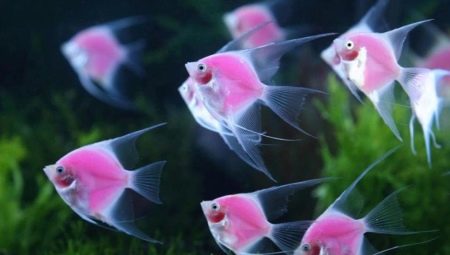
One of the most beautiful and largest aquarium fish, the angelfish is the dream of almost every keen breeder. At first glance, they attract attention, look spectacular and exotic. But not every aquarist can grow such beauties. Care and maintenance of a scalar really requires a serious investment of time and effort.
Called "angels" by foreign fans, these predatory fish do not differ in their exemplary behavior. It is better not to place them together with fry, and in general it is better to move them away from other inhabitants of the aquatic world. Caring for scalars for beginners can be overwhelming. But by creating optimal conditions for aquarium fish and their eggs, excellent results can be obtained by significantly increasing the existing population. Consider further what rules should be followed when settling these large cichlids in a new habitat.
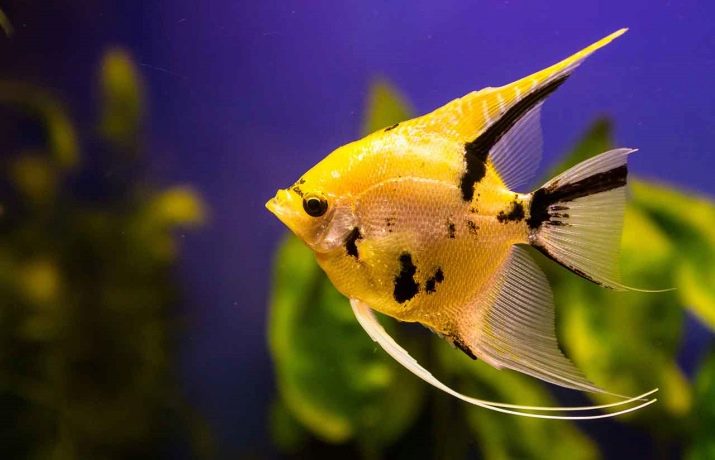
Optimal conditions
In order for scalars to feel great in a new place, care should be taken to create optimal living conditions for them. These spectacular aquarium fish need a fair amount of space. For novice aquarists, it will be useful to know that it is better to keep the scalar in pairs - single individuals are rejected by a school of fish, receive more meager food. In a monobreed aquarium, the main pair will always be identified, leaders demonstrating their status in communication with congeners.
Keeping exotic scalars at home began relatively recently - about a century ago. For a long time, hobbyists have been using trial and error. It was not possible to get offspring, there were problems with the development of diseases in fish. But gradually the right solutions were found, and today it is no more difficult to keep a scalar in an aquarium than a guppy. The main thing is to create optimal conditions for these beautiful creatures.
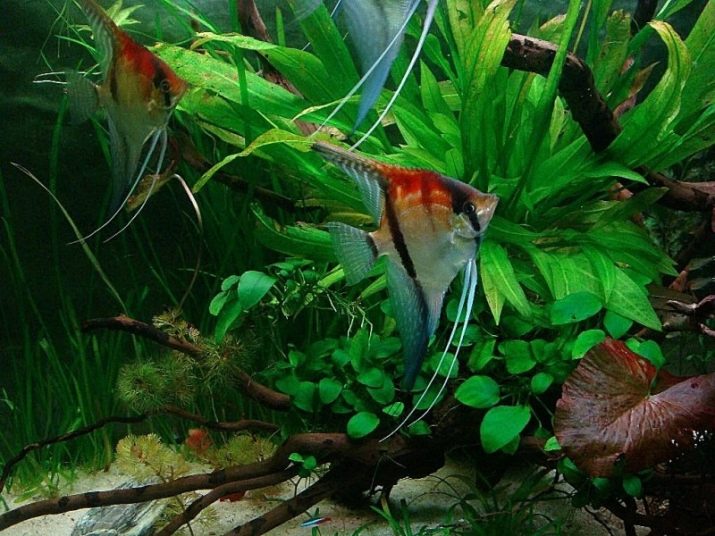
Choosing an aquarium
Preparing to populate the scalar provides for the correct selection of the tank. The aquarium is selected based on the size and needs of the fish. In the wild, these cichlids easily reach 26 cm in length, in captivity their dimensions are more modest, but also impressive - about 15 cm. Accordingly, an aquarium for such large inhabitants needs a roomy one - at least 60 liters, but the 250 liter option is considered optimal for keeping. It can contain 4-5 pairs of fish, equipping them with a spacious place for free swimming, and a green backwater, and natural or artificial shelters.
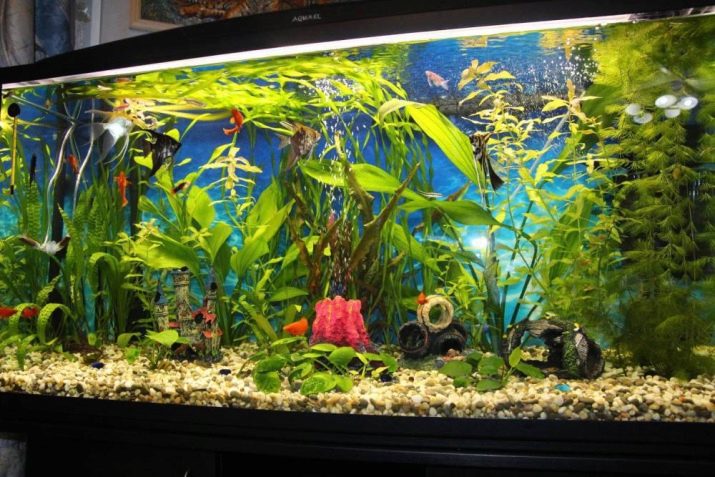
The recommended wall height for the scalar aquarium is about 60 cm. The optimal shape is considered a classic parallelepiped, which makes it easier to plant fish and plants, care, and clean the container. The aquarium should be set up in a quiet place with good artificial lighting (MB lamps). Direct rays of the sun are an undesirable factor; their contact with scalars is best avoided. The absence of unnecessary stress, extraneous noise will keep the bright color of the fish in its most attractive form.
A spacious aquarium is absolutely necessary for scalars if it is planned not only to grow fish, but also to ensure their proper development, good spawning.
On average, a capacity of 60 liters is sufficient for 1 pair of adults. With powerful filters, you can further compact the settlement. But in this case, there will be a struggle between the fish for a place, which will inevitably lead to the loss of their decorative effect.
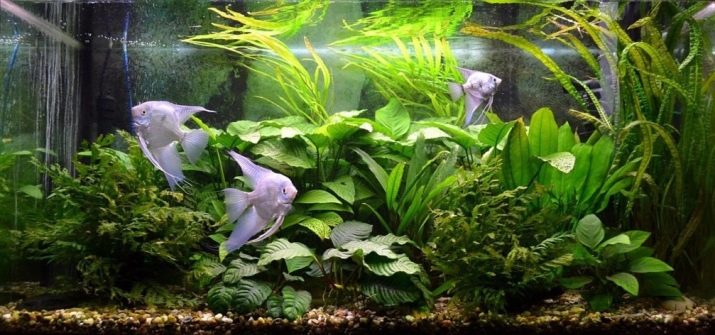
Water temperature
Water temperature indicators affect many factors in the development of scalar, since fish naturally live in the Amazon, in a tropical climatic zone. Aquarium maintenance is also possible at water temperatures ranging from +16 to +23 degrees Celsius. But the appearance and decorativeness of the pets will be unsatisfactory at the same time.
To make the maintenance of scalars at home close to their natural range, it is necessary to maintain a fairly high softness of the water, keeping its temperature within +23.36 degrees. During the spawning period (and to start the breeding process), it is further increased. Optimum indicators will be in the range of + 30-32 degrees Celsius.
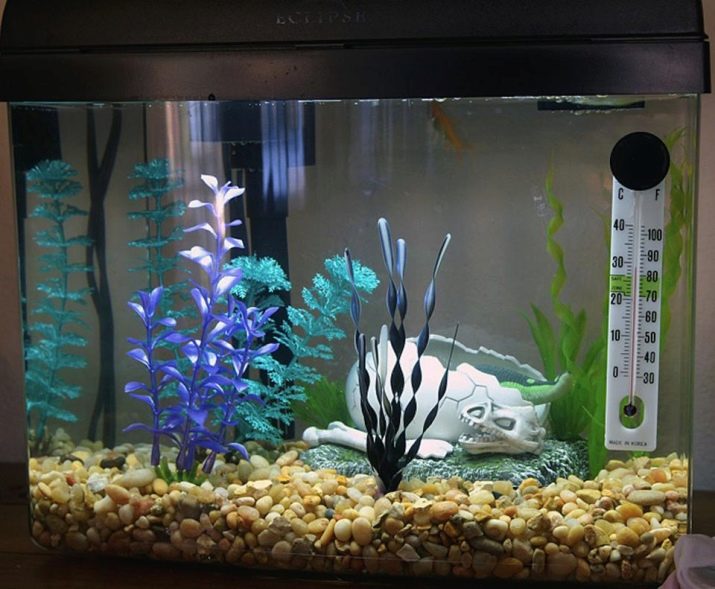
Soft water of low acidity is an important component of success when growing aquarium scalars. The optimum hardness is 18, pH is from 6.5 to 7.4. But in addition to these figures, it is very important to maintain a constant microbiological composition of the environment. If it changes frequently or dramatically, problems are inevitable. On average, a renewal of 1/4 of the total volume of fluid is required weekly.
In nature, scalars live in lagoons and backwaters, where the current is very slow or absent at all. In the aquarium, they also do not need a violent flow. It will be enough just to provide good filtration
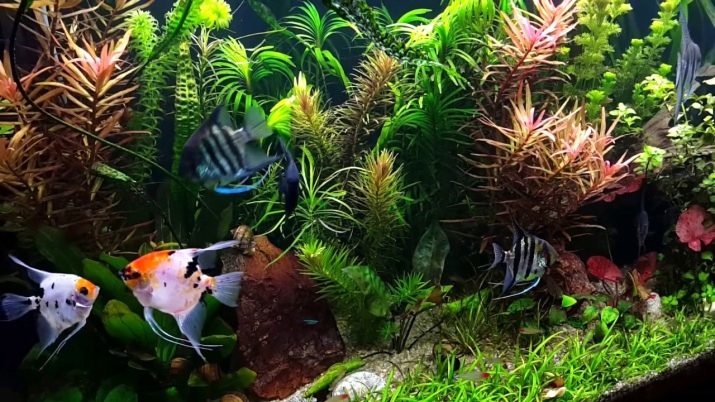
... It is important to remember that too warm water is a favorable environment for the development of pathogenic microorganisms. Sometimes its temperature is specially lowered to prevent dangerous diseases.
When creating a comfortable environment for scalars, experienced aquarists often create biotope aquariums with "black" water. It is characterized by the following indicators:
- brownish yellow tint;
- high transparency;
- content of humic acids;
- tannins that impart a characteristic color.
Such a liquid medium gets its natural color in the Amazon due to contact with humus-rich soil. In artificial conditions, it is recreated using special concentrates or using simple home remedies.Chopped bark and willow roots (young, spring harvest), alder cones, oak bark or chestnut shells are steamed in a water bath for two hours, then an infusion is prepared on the basis of the resulting raw materials. Its addition to water provides an increase in the bactericidal properties of the environment, prevents the growth of pathogenic microflora.
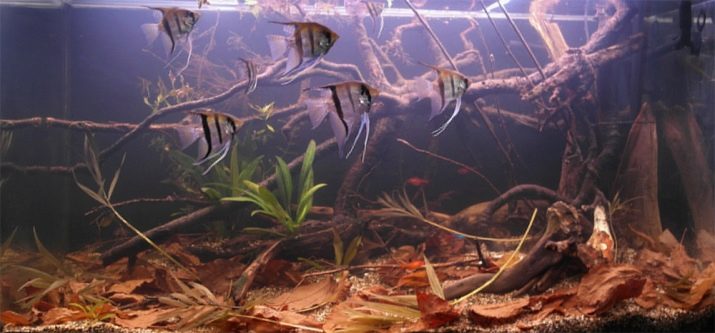
Necessary decorations
For an aquarium with scalars, you need to purchase certain plants and decorations. First of all, these are creeping along the walls and surfaces. In such thickets in nature, they hide from enemies. During spawning, large plants with dense leaves will have to be planted or placed in the ground - kamomba, ludwigia, ambulia. Among herbaceous "neighbors", it is better to give preference to Cryptocoryne - scalars are especially fond of it.
Freshwater vallisneria is also considered suitable, unpretentious in cultivation. You can decorate an aquarium with scalars with marsh anubias - its creeping rhizome will speed up the landscaping of the aquarium.
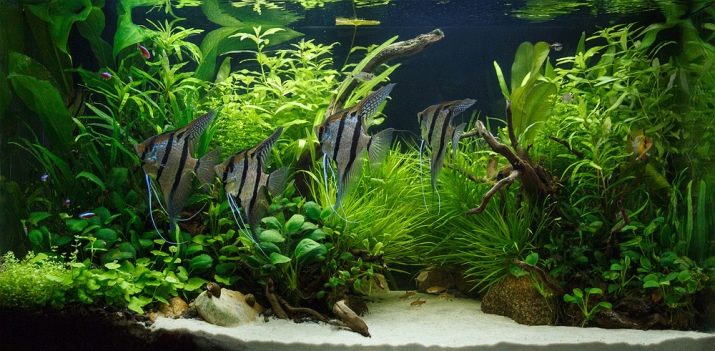
The spawning tree should also be greened, creating good conditions for the fish during the mating season and the provision of offspring.
Feeding features
Feeding scalars is a relatively straightforward process. These fish can be content with dry food, but they are also ready to feed on living organisms. Given the volume of the stomach, it is better to give food more often - up to 3 times a day, but in small portions, weekly arranging for pets unloading periods for 24 hours to prevent obesity. Adult fish are fed twice a day. The fry are eaten 3 times a day, until about 3 months of age.
The most appropriate diet for any cichlid should be high in protein. Fresh or frozen korets, daphnia, bloodworms, shrimps are suitable - they are given in one feeding during the day. Among dry food, it is better to choose those that slowly sink to the bottom. Special flakes will be the best solution, it is difficult for scalars to eat food from the bottom due to the peculiarities of the body structure.
Among plant foods, seaweed is best suited for scalars. Riccia, duckweed, wolfia can be used as a food element. As an additional feeding, you can use minced seafood meat from shrimp to octopus, as well as beef heart.
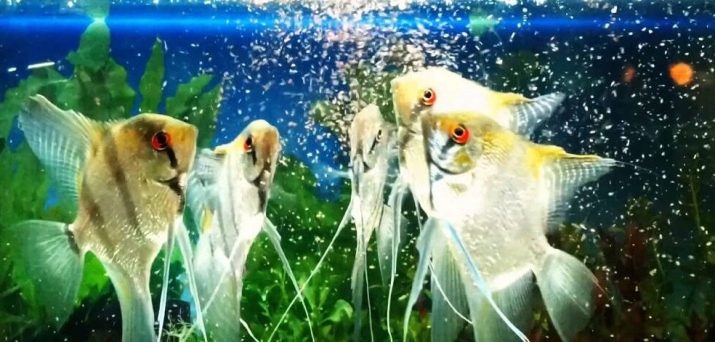
Compatibility with other fish
This cichlid subspecies is characterized by peacefulness towards other fish. But they should not be kept together with fry, they are most likely to be eaten. The scalars get along well with:
- barbs;
- tetras;
- catfish plecostomuses, corridors;
- swordsmen;
- mollies;
- fights;
- zebrafish.
They are conditionally compatible with eels, crabs, shrimps. Catfish in the aquarium are highly desirable, since the scalars themselves are usually in no hurry to clean the bottom of contamination. These fish are categorically incompatible with guppies, koi carps, discourses, African and South American cichlids.
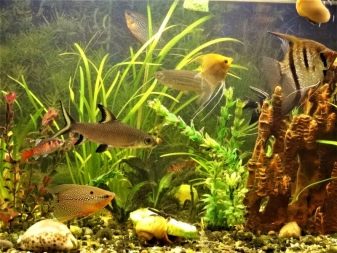
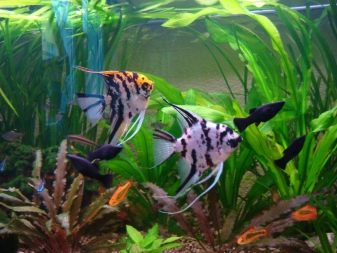
Caring for various types of scalars
Their own characteristics and some subtleties in caring for different types of scalars still exist. The common scalar is considered the most unpretentious. The altum scalars, which live exclusively in the upper reaches of the Orinoco, are considered the most difficult to keep and breed - they are very sensitive to changes in habitat conditions. It is better to engage in their selection for aquarists with extensive experience. A compromise solution can be the Leopold scalar - a beautiful and relatively rare species that does not require difficult care.
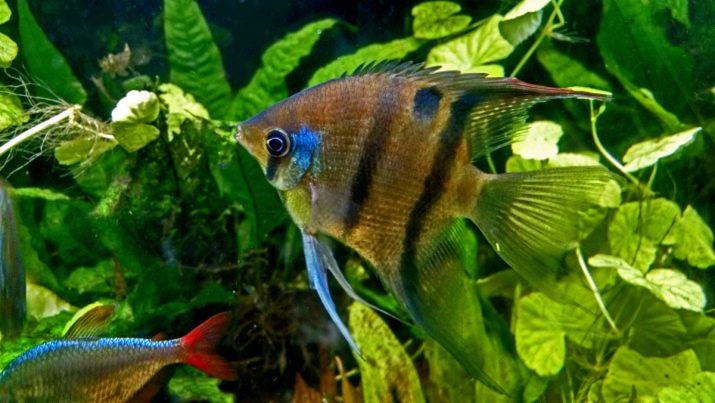
We take care of the offspring
As soon as eggs are laid in a special spawning or general aquarium, you should try not to disturb the couple. The less stress she experiences, the higher the likelihood of healthy offspring. So that the caviar does not suffer from other fish ready for parenting, it is better to send the scalar to the spawning aquarium in advance. Male and female exhibit instincts, providing oxygen flow to the clutch by fanning it with fins; spoiled (whitened) eggs can be eaten. When freeing the young from the shell, the parents help the babies break through the dense barrier.

You need to keep the fry with an adult pair for another 7-10 days. Then they are deposited. It should be borne in mind that even with good care, about 20% of young fish die in scalars.
To create good conditions, the environment in the new aquarium is created in a 1: 1 ratio with distilled or boiled raw materials, supplemented with antifungal additives. The other half is taken from the normal reservoir where the population lives. The optimum temperature for fry should be at +30 degrees Celsius. Hatching of juveniles occurs on the 3rd day, for another 4 days they are attached to the site with flagella, then they are ready for independent movement.
Angelfish fry need a balanced diet. In the early days, they are given ciliates, egg yolk or special starter feeds. A few days old scalars can be fed live food - brine shrimp. From 1.5 months, cut bloodworms and tubifex are given. It is necessary to plant young growth as it grows; fish are transferred to an adult aquarium for 3 months of life.

For information on how to maintain, care for and propagate scalar, see the next video.








